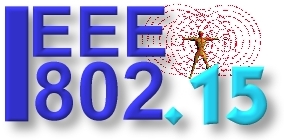|
|
IEEE
802.15 WSN
Task
Group 7a (TG7a)
Higher
Rate, Longer Range Optical Camera Communications (OCC) Task Group
|
|||||||||||||||
|
|
||||||||||||||||
|
Purpose:
The standard provides a global solution initially targeting vehicular applications requiring, secure, high data rate (up to 100Mbits/sec), and long-range optical camera communication (up to 200m). Besides, this standard provides access to unlicensed spectrum, inherent communication security due to inability to penetrate through optically opaque walls, data delivery without using RF spectrum, MIMO and Artificial intelligence (AI)-based PHY and MAC layers, and communication augmenting and complementing existing services (such as illumination, indication, localization, etc.). These are also attributed that will be valuable in commercial and business settings, both of which are expected to be significant emerging markets. Scope:
This standard specifies a high-rate Optical Camera Communications (OCC) Physical Layer (PHY) using light wavelengths from 10000 nm to 190 nm in optically transparent media. It is capable of delivering data rates up to 100 Mbit/s and is designed for point-to-point and point-to-multipoint communication. Adaptation to varying channel conditions and maintaining connectivity during high mobility (speeds up to 350 km/h), flicker mitigation, Radio Frequency (RF) co-existence, and a communication range of up to 200 m, are included. Multiple-Input-Multiple-Output (MIMO) (e.g. Multiple-Input-Multiple-Output Orthogonal frequency-division multiplexing (MIMO-OFDM)) is utilized to deal with high-levels of optical interference while maintaining high-rate data transmission. Relaying mechanisms are included enabling heterogeneous operation with existing RF wireless data communications standards. The Amendment adheres to applicable eye safety regulations. Need:
Given the growing expectation of ubiquitous wireless connectivity in high mobility environments, High Data Rate OCC emerged as the new candidates to repace RF technologies, which is gradually exhausted. OCC technologies provide access to unlicensed spectrum, inherent communication security due to inability to penetrate through optically opaque walls, data delivery without using RF spectrum, and Artificial intelligence (AI)-based PHY and MAC layers. More importantly, OCC can take advantages of hardware existence (Smartphone, webcam, CCTV, etc.). Thus, High Data Rate OCC technology may be a promising solution for market acceptance. Information
· PAR · CSD Who to contact with questions
The Institute of Electrical and Electronics Engineers, Inc. |
|||||||||||||||
|
|
|
|
If you would like to contact the IEEE
802.15 Webmaster, email to alfvin@ieee.org |
|
(alfvin@ieee.org)
URL: http://ieee802.org/15/pub/TG3.html
(Modified:02-Nov-2020
), Rev. 0.4
